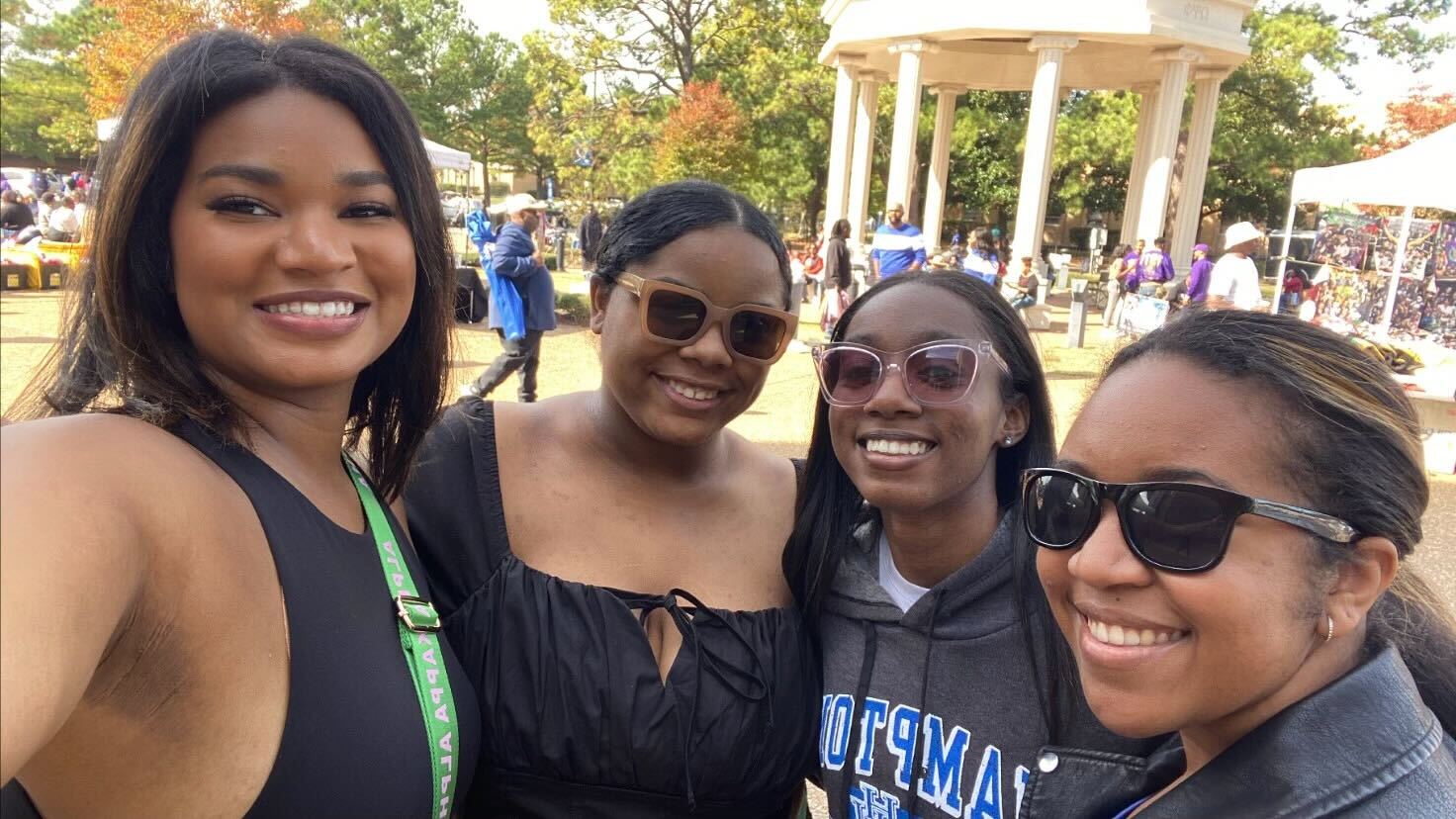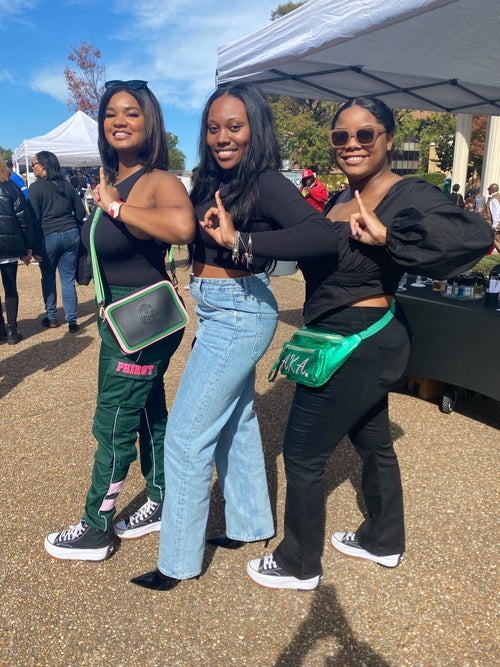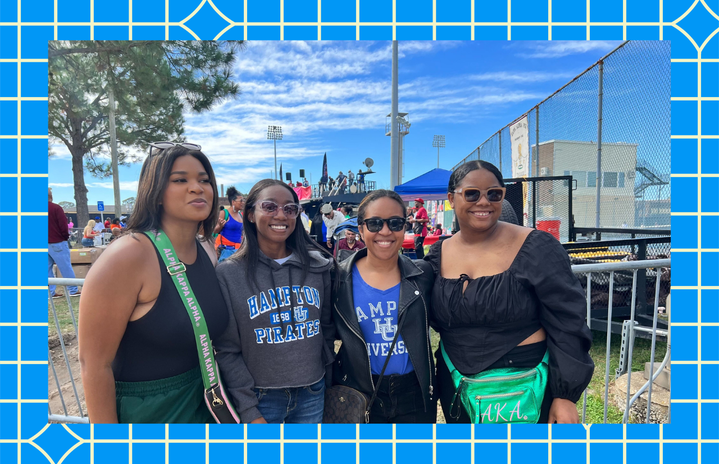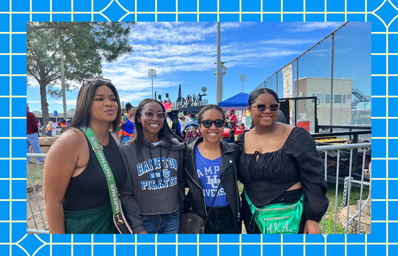Homecoming: It’s one of the biggest celebrations that college students look forward to during the school year. Each one is more memorable than the last, with fun activities like the exciting football game, the round-the-clock tailgating, and the phenomenal fashion. As a graduate of Hampton University, an HBCU in Virginia, homecoming is an event unlike any other. Dancing with my fellow alumni, hopping to every food truck, strolling with my sorority sisters — the list goes on.
For me, HBCU homecoming is about embodying the spirit of Black history and culture. Think of it as a giant family reunion with occasional celebrity appearances. If you scroll through social media, at first glance homecoming seems like a week of activities of late-night parties or concerts held by famous artists. And you wouldn’t be wrong! Most HBCU homecoming has a lineup of events for students to attend and let loose. NCAT (North Carolina Agricultural and Technical State University) is known to have the best homecoming celebration, earning itself the title GHOE (greatest homecoming on earth).
But even though homecoming is a lighthearted event complete with parties, vendors, and great food, it’s also a time to come together to celebrate Black culture and how far Black people have come in their educational journey. Because of HBCUs and their extensive history, homecoming immediately becomes more than just a party. It’s a moment where you have the opportunity to forge relationships with many generations of alumni and current students.

According to the National Museum of African American History and Culture, HBCUs (historically Black colleges and universities) are defined as “any historically black college or university established prior to the Civil Rights Acts of 1964, whose principal mission was, and is, the education of black Americans, and that is accredited by a nationally recognized accrediting agency or association determined by the Secretary of Education.” They offered Black students an opportunity to pursue a higher education in the midst of slavery and segregation. Today, HBCUs allow students to dive further into Black culture and history and excel academically without fear of racial discrimination. According to Best Colleges, there are more than 100 HBCUs in America, each providing students with a safe space to learn and grow with a sense of belonging and community.
The history of HBCU homecoming is hard to originate, but the first HBCU alumni-centered fall football game happened sometime in 1924 at Morehouse College. Alumni were already gathering at events way beforehand, but Morehouse College’s was probably when homecoming really came to be what we celebrate today. Typically, homecoming lasts for a whole week with the grand finale being the football game and tailgating events. Throughout the week, colleges host a myriad of events for students and alumni like Greek step shows, marching band performances at halftime, and even a pageant crowning two students as the Miss and Mister of their respective colleges. Each of these events provides students and alumni the opportunity to connect with each other.
For me, attending homecoming was like stepping into the past, present, and future all at once. As a student, I loved attending my homecoming because of all the amazing people I would meet. One year during homecoming week, I was tasked with interviewing an alumnus for one of my class projects. I was introduced to my aunt’s friend who graduated from Hampton University in 1976, and I got to hear the amazing stories of her days walking on the same campus grounds long ago. I remember going to fun events like the annual homecoming parade during my freshman, sophomore, and senior years and seeing the crowning of Mr. and Miss Hampton University. It was truly inspiring walking around campus and meeting alumni of my same major or those who used to live in the same dorm as me.

One of my favorite memories of my school’s homecoming was when I went as a new alumna. It felt so surreal interacting with students whose shoes I used to walk in and giving them advice. It was very inspiring meeting members of my sorority, interacting with them, and hearing the stories of how those in my sorority forged their lifelong friendships. Meeting them also gave me the opportunity to network with those a part of the National Pan-Hellenic Council, known as the “Divine Nine.”
Attending my school’s step show was also a memorable experience. Stepping, a ritual dance performance based on synchronized movements that is tied to African cultural traditions, originated among Black fraternities in the mid-1900s. It now serves as a way for Black fraternities and sororities to express love and pride for their respective organizations to a wider community. Cheering on my sorority sisters as they performed on stage was so fun, and I could feel the love and pride in my soul as I remembered the lifelong bonds I have made with them.
I can’t help but smile at the thought of knowing that everyone around me at homecoming gathers together in celebration of Hampton University and HBCU culture. It’s a humbling experience knowing that by attending an HBCU, I’m continuing the legacy that my ancestors set for Black education when there wasn’t a place for them to learn.


